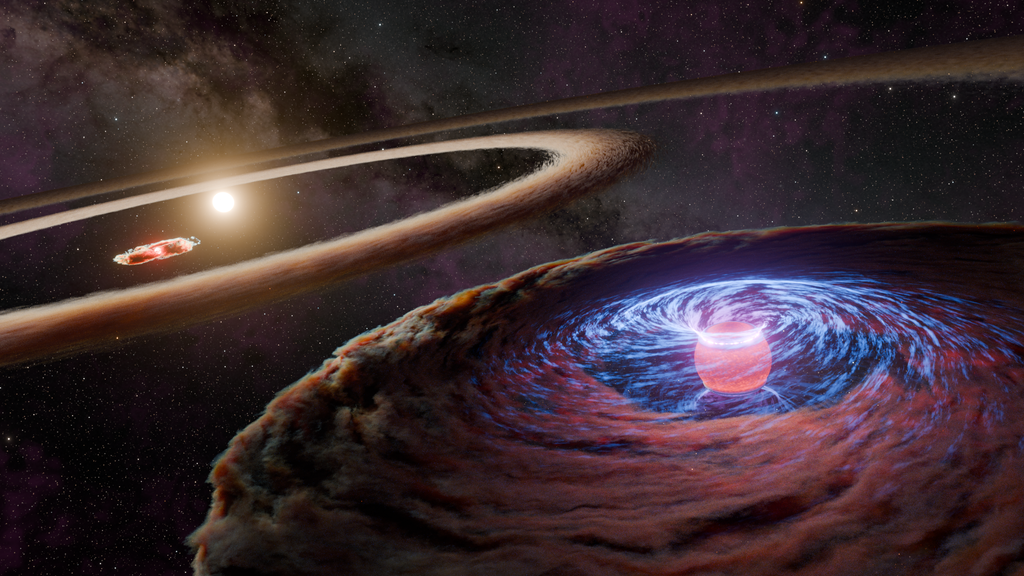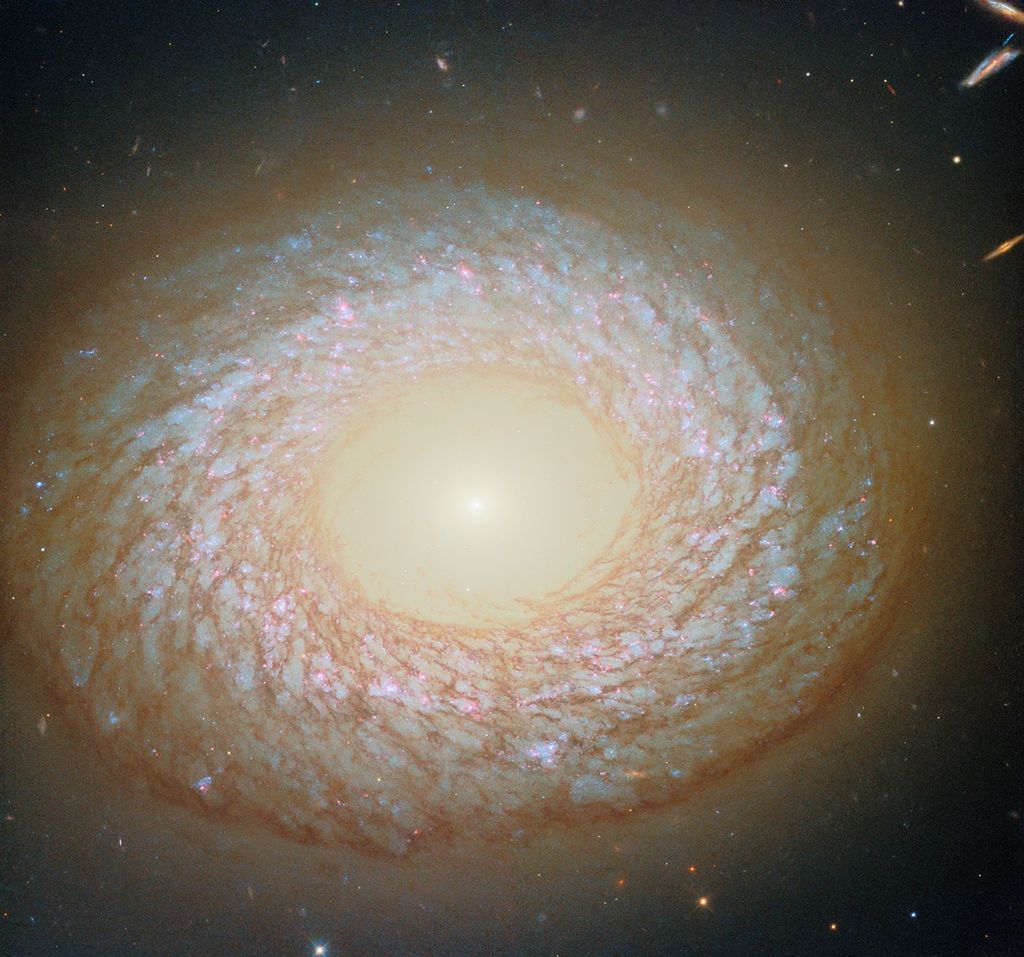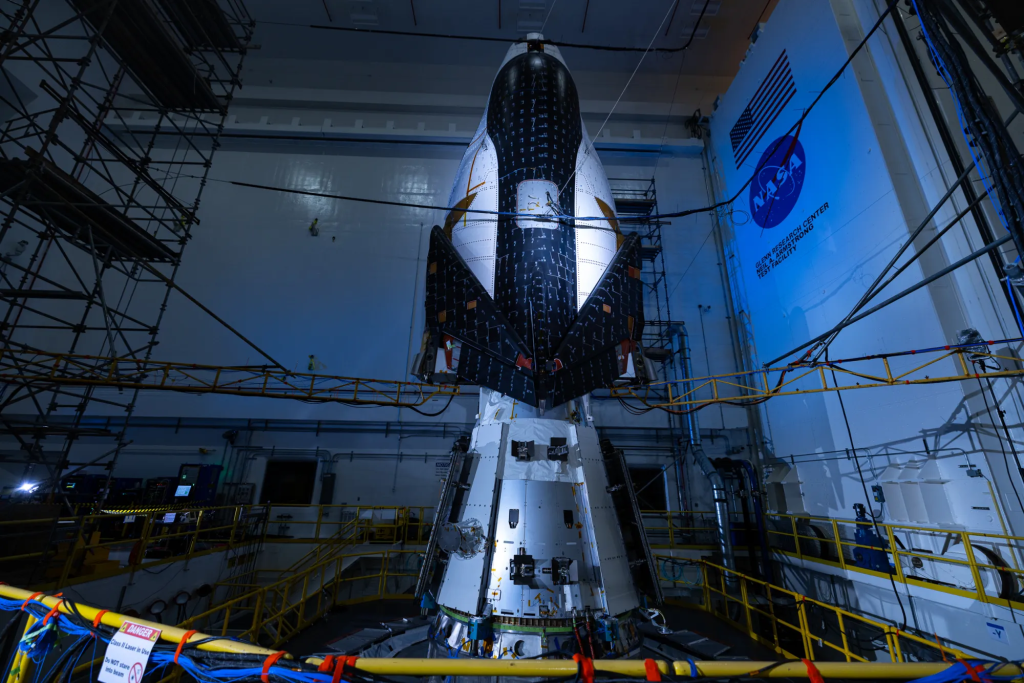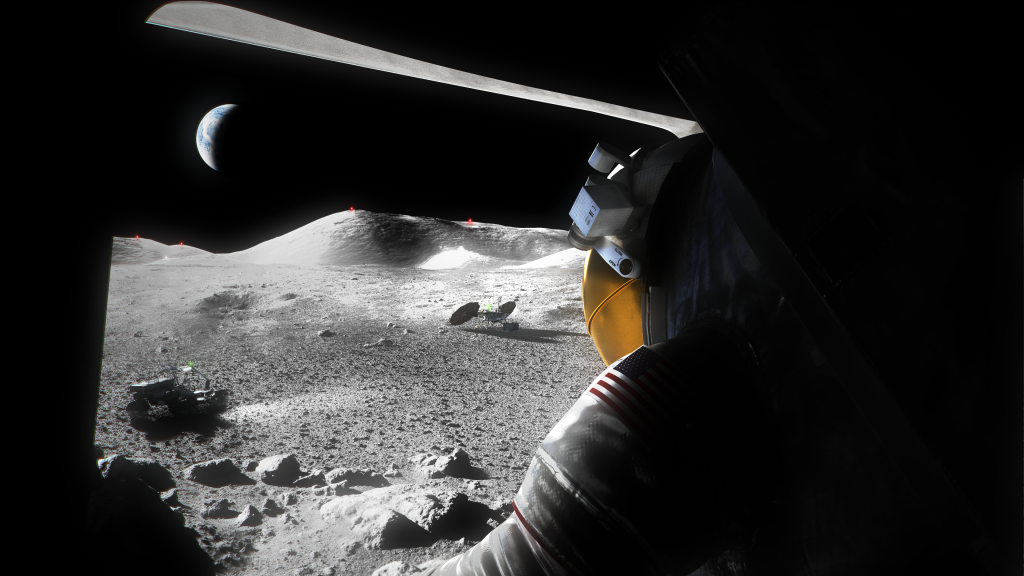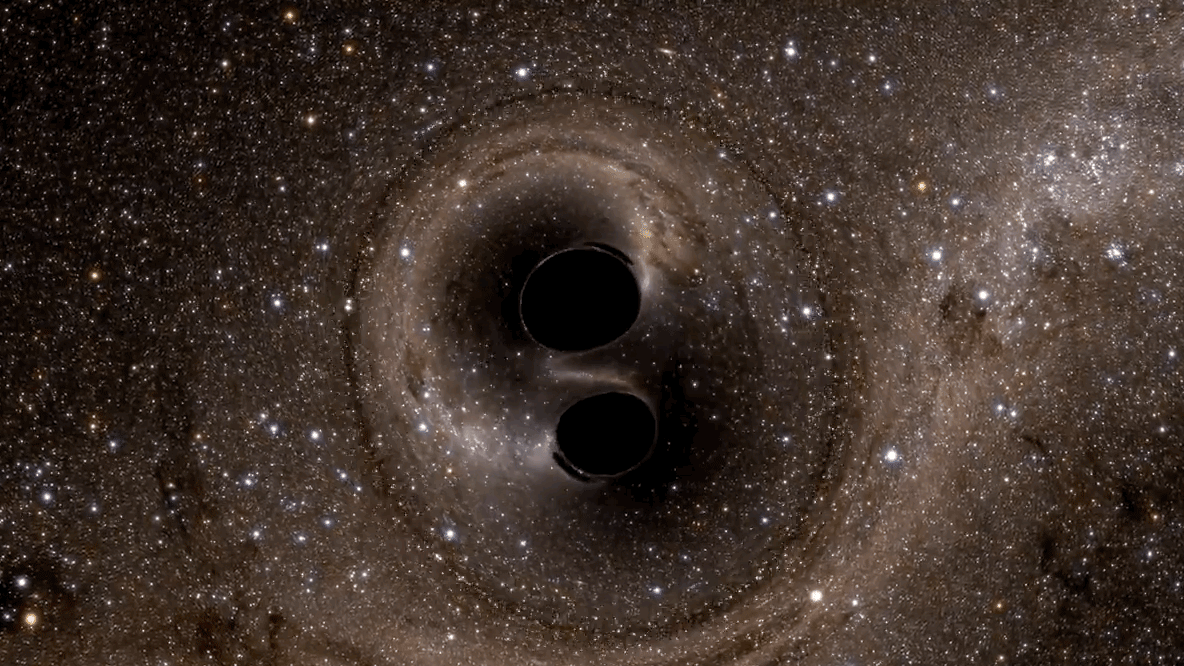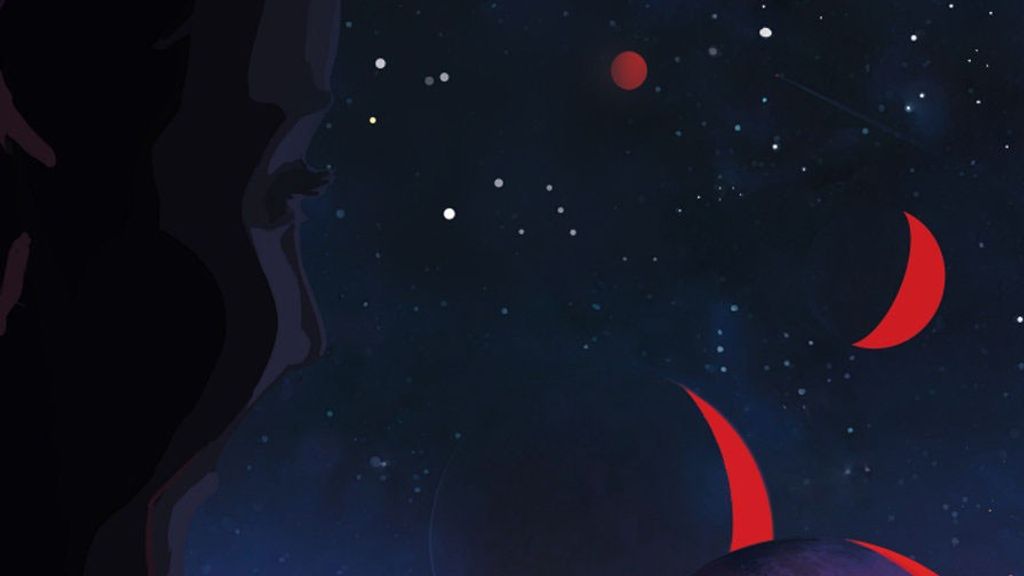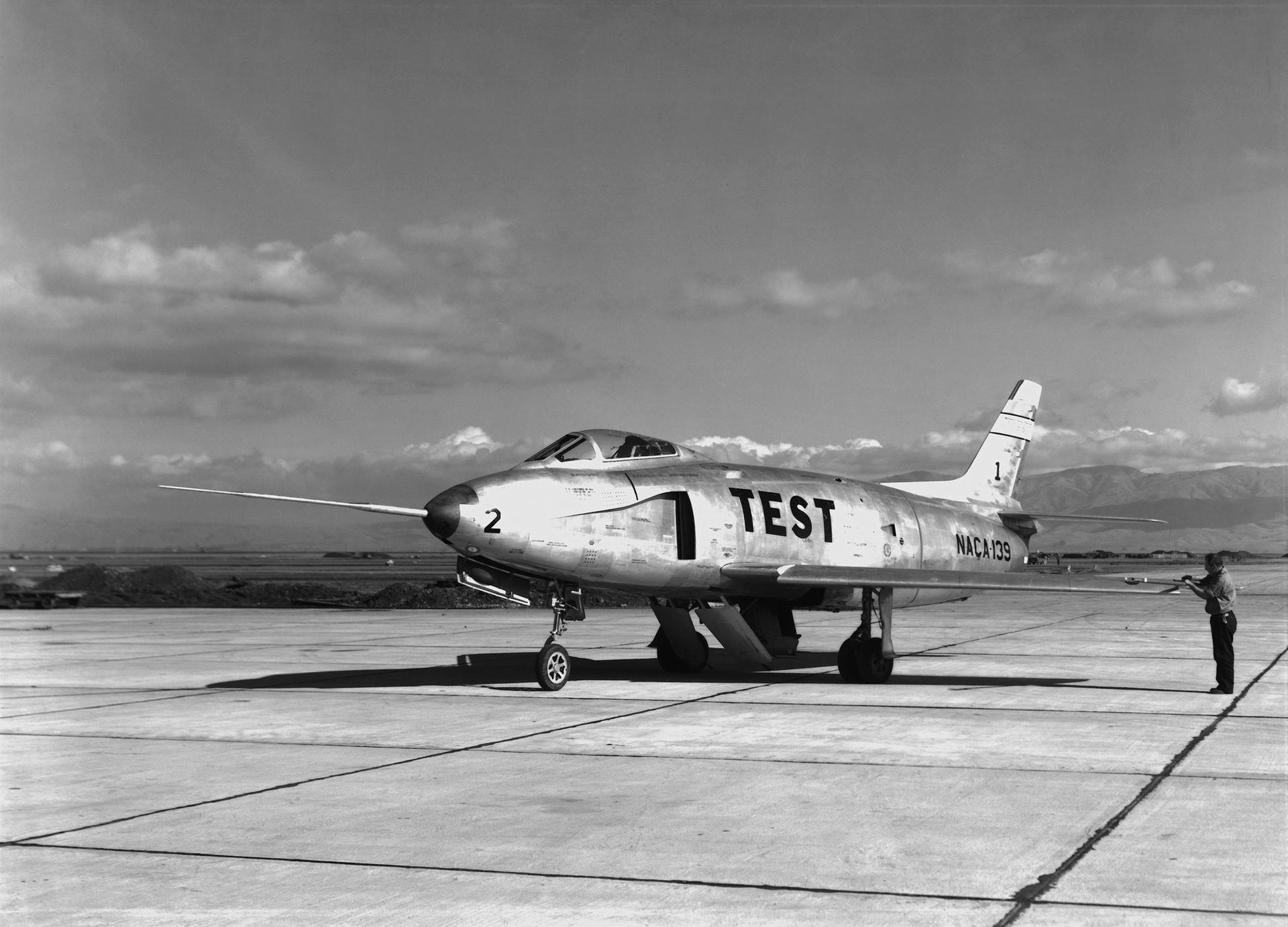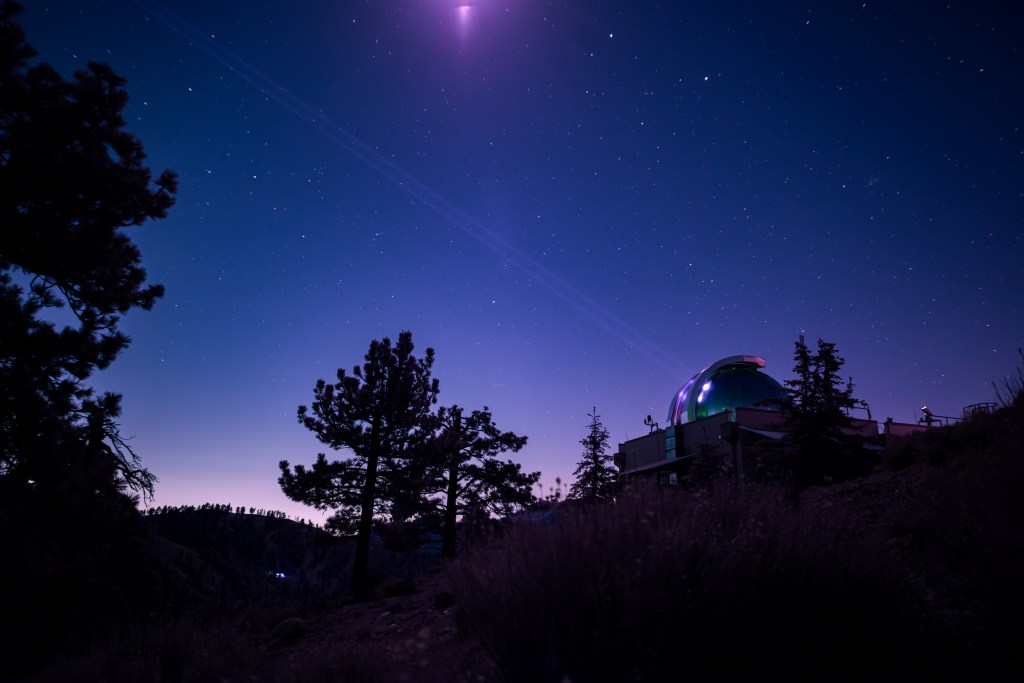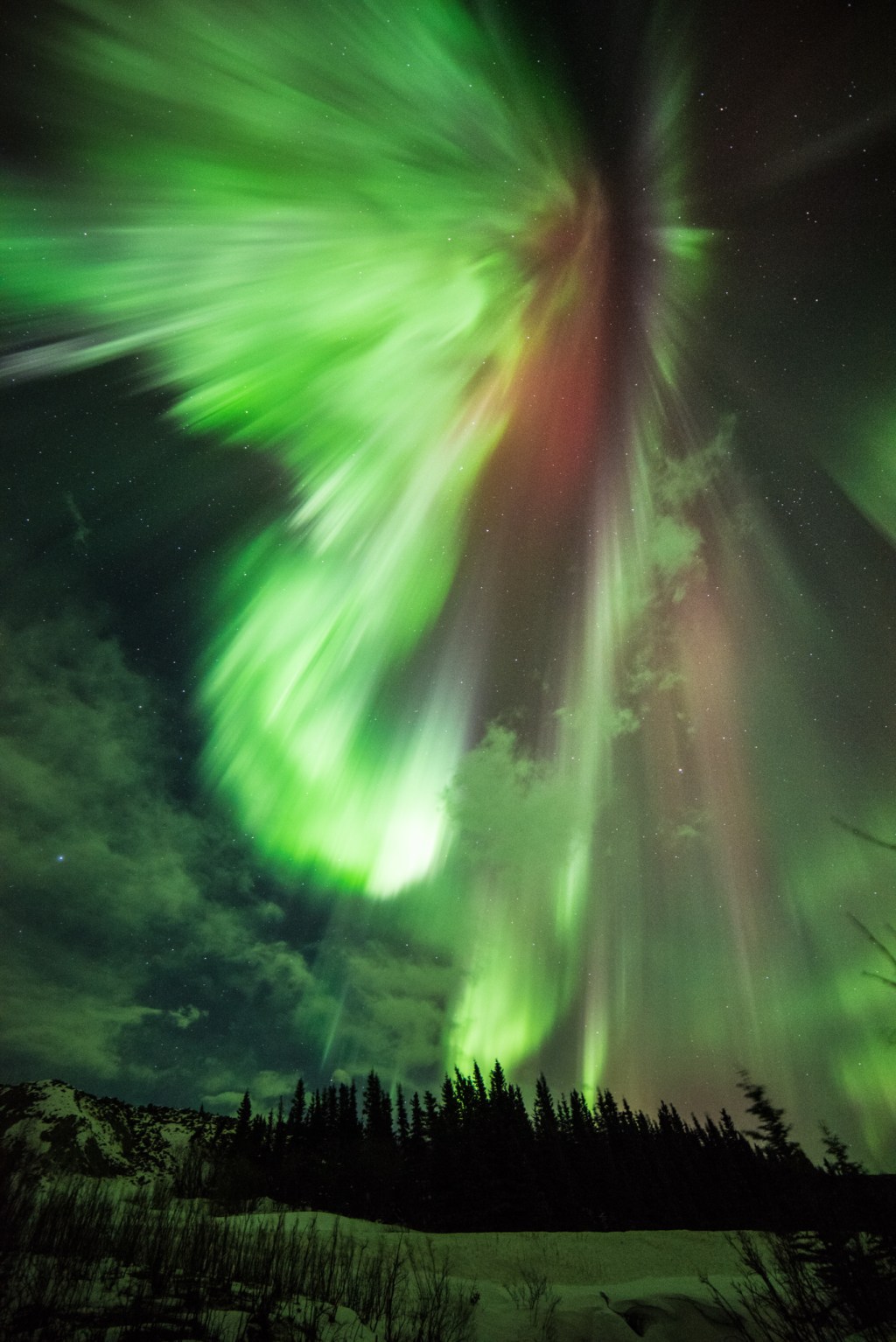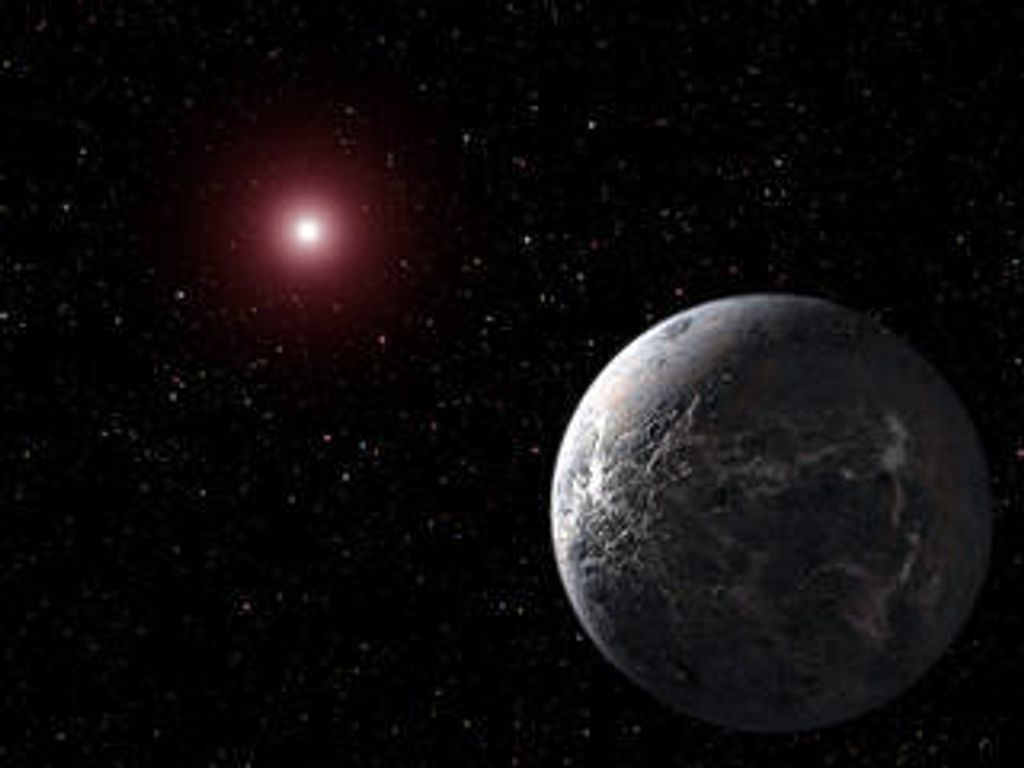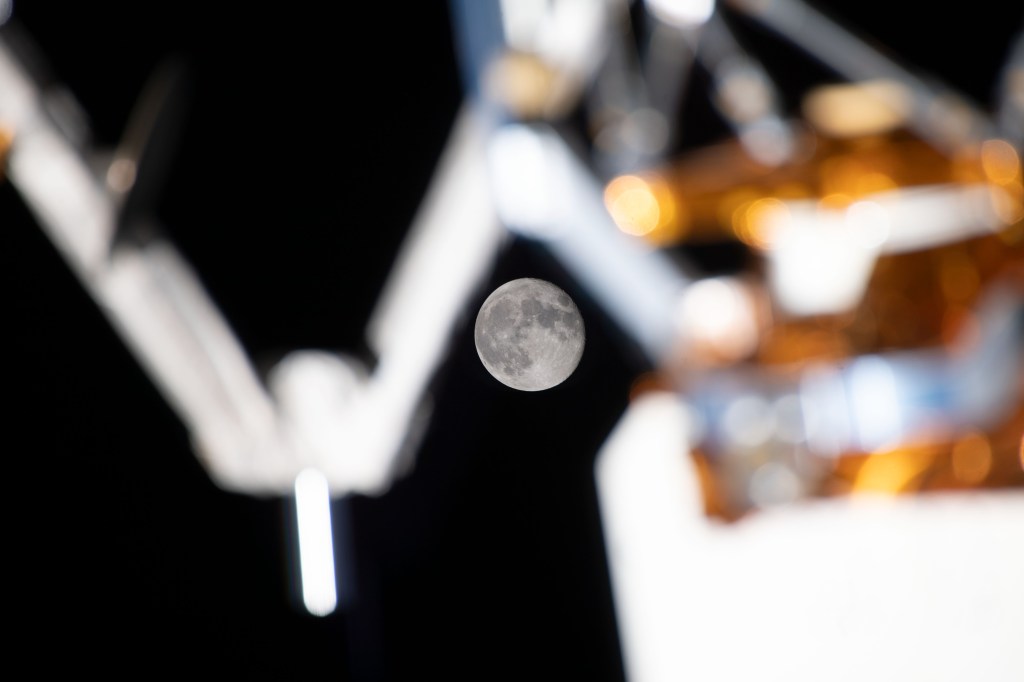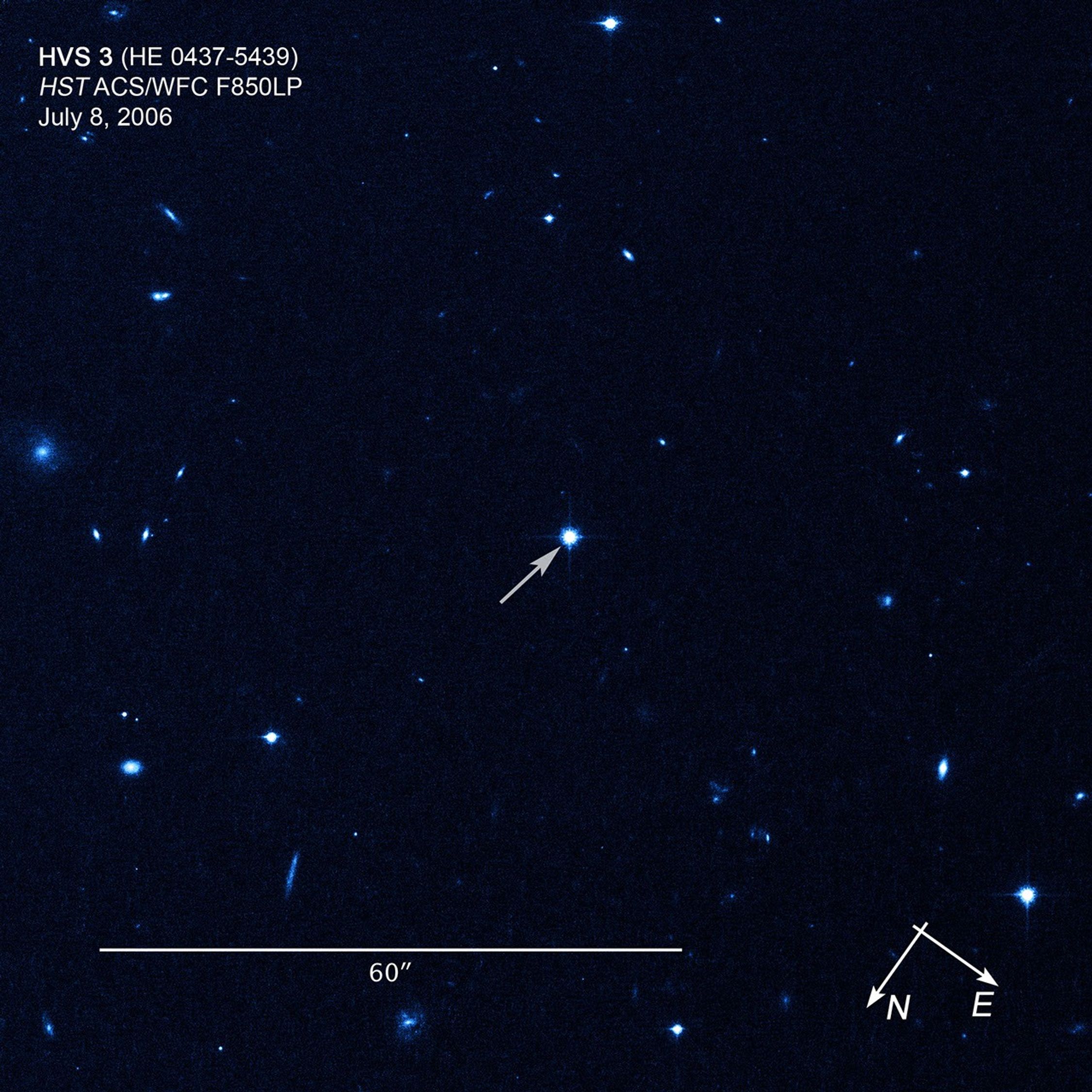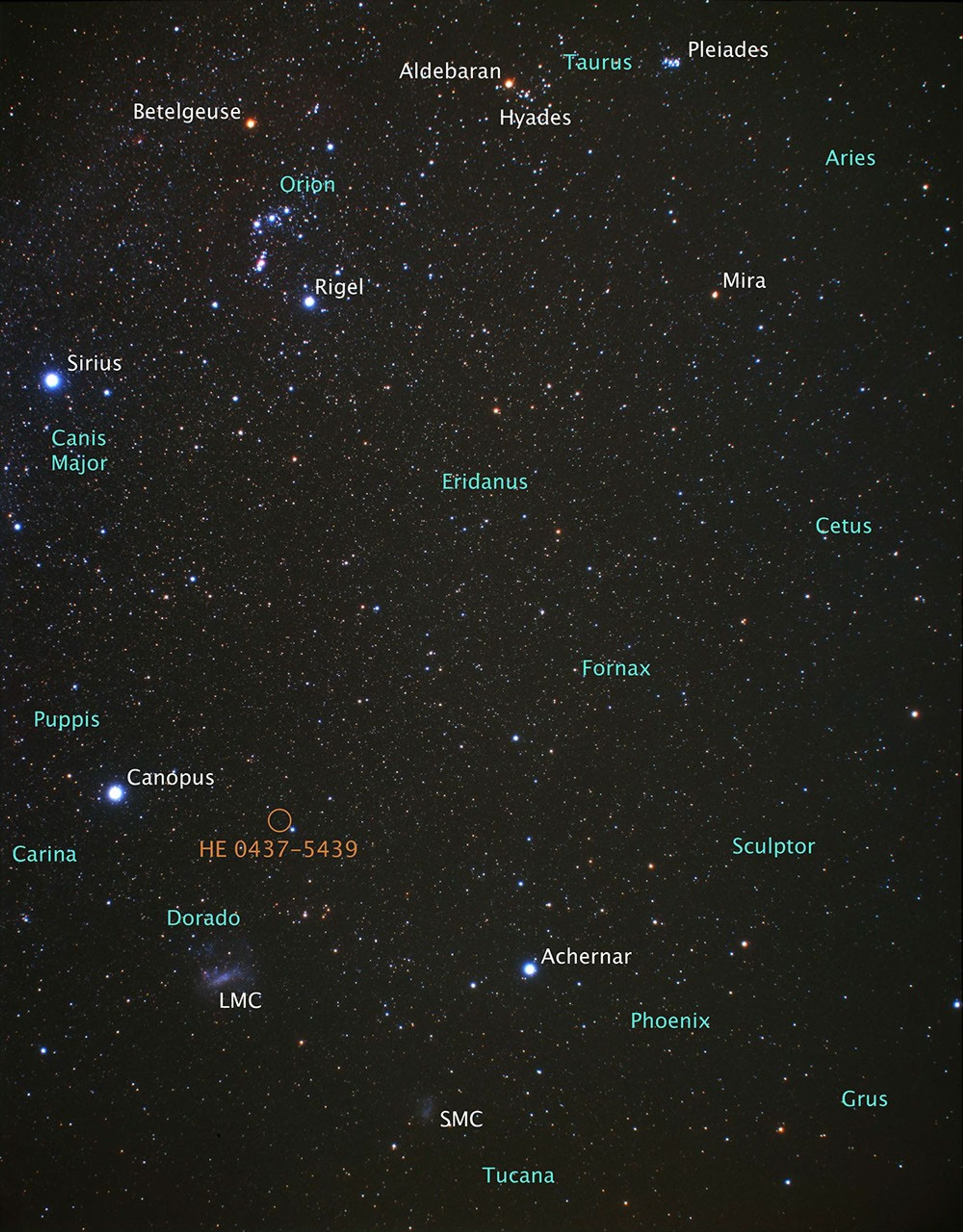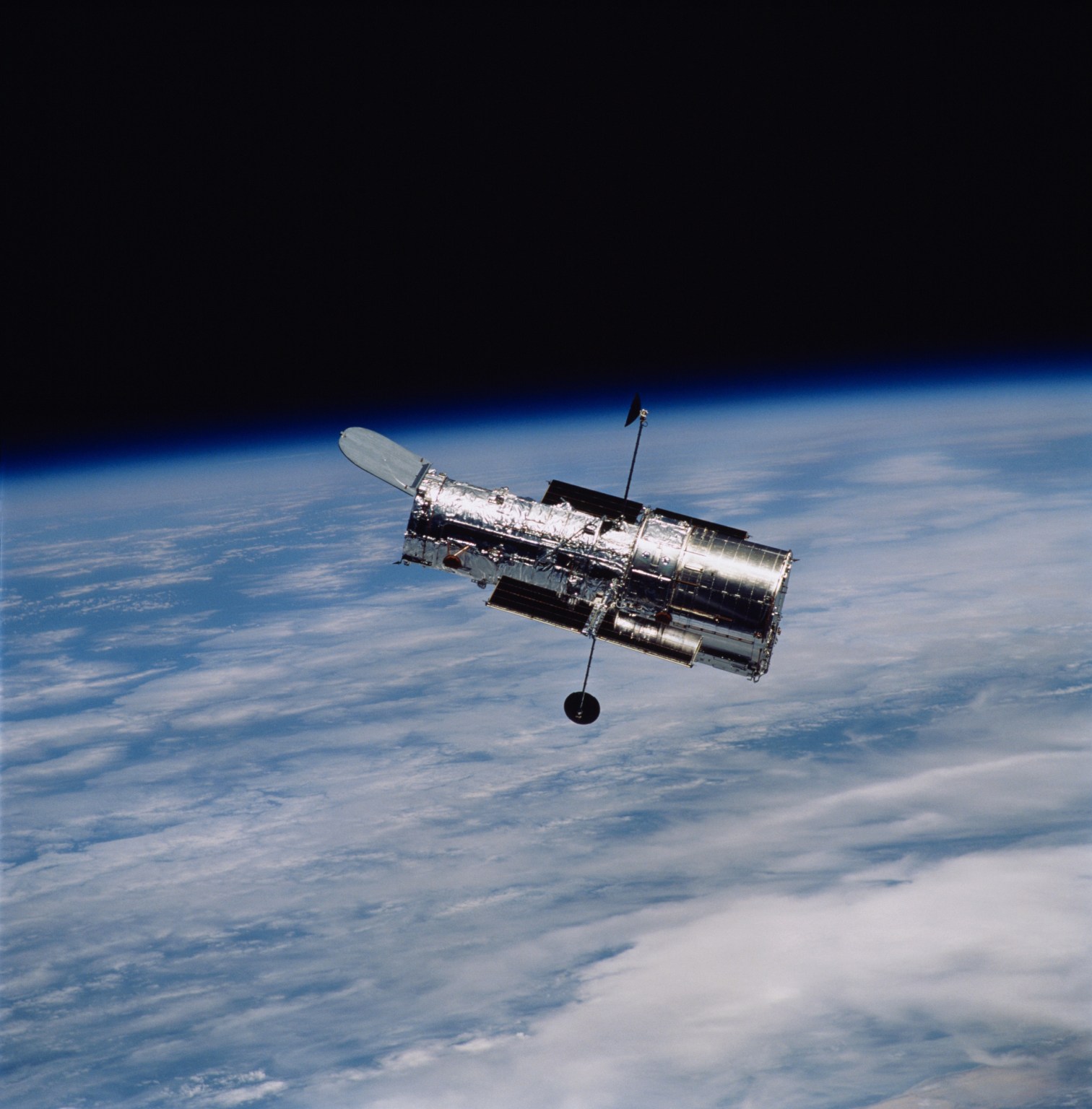1 min read
A Speeding Star is Caught on Hubble’s Camera

This NASA Hubble Space Telescope image shows the hypervelocity star that was kicked out of the center of our Milky Way galaxy with enough energy to escape the galaxy's gravitational grip. Dubbed HE 0437-5439, the stellar speedster may have been a member of a triple-star system and was jettisoned from the galaxy by the monster central black hole.
Galaxies in this image provide a grid of landmarks, which astronomers used to measure the full speed of this stellar outcast over 3 1/2 years. The stellar outcast is rocketing through the Milky Way's distant outskirts at 1.6 million miles an hour, high above the galaxy's disk, about 200,000 light-years from the center. The star is destined to roam the empty depths of intergalactic space.
Based on the speed and position of HE 0437-5439, the star would need 100 million years to have journeyed from the Milky Way's core. Yet its mass – nine times that of our Sun – and blue color mean that it should have burned out after only 20 million years – far shorter than the transit time it took to get to its current location. The most likely explanation for this paradox is that the star is a blue straggler, a pair of smaller and longer-lived stars that merged during flight.
Hubble's Advanced Camera for Surveys made this observation on July 8, 2006, in near-infrared light.
About the Object
- R.A. PositionR.A. PositionRight ascension – analogous to longitude – is one component of an object's position.04h 38m 12.0s
- Dec. PositionDec. PositionDeclination – analogous to latitude – is one component of an object's position.-54° 33' 12.0"
- ConstellationConstellationOne of 88 recognized regions of the celestial sphere in which the object appears.Dorado
- DistanceDistanceThe physical distance from Earth to the astronomical object. Distances within our solar system are usually measured in Astronomical Units (AU). Distances between stars are usually measured in light-years. Interstellar distances can also be measured in parsecs.The star is ~200,000 light-years from the galactic center.
About the Data
- Data DescriptionData DescriptionProposal: A description of the observations, their scientific justification, and the links to the data available in the science archive.
Science Team: The astronomers who planned the observations and analyzed the data. "PI" refers to the Principal Investigator.The image was created from Hubble data from proposals 10824 and 11782: O. Gnedin (University of Michigan, Ann Arbor), A. Gould, J.L. Prieto, and K. Stanek (Ohio State University), J. Anderson, H. Bond, M. Livio, E. Nelan (STScI), and W. Brown, M. Geller, S. Kenyon, and M. Kurtz (Harvard-Smithsonian Center for Astrophysics). - InstrumentInstrumentThe science instrument used to produce the data.HST>ACS/WFC
- Exposure DatesExposure DatesThe date(s) that the telescope made its observations and the total exposure time.July 8, 2006 and December 23, 2009, Exposure Time: 56 minutes
- FiltersFiltersThe camera filters that were used in the science observations.F850LP (z)
- Object NameObject NameA name or catalog number that astronomers use to identify an astronomical object.HE 0437-5439
- Object DescriptionObject DescriptionThe type of astronomical object.Hypervelocity Star
- Release DateJuly 22, 2010
- Science ReleaseHyperfast Star Was Booted from Milky Way
- Credit

This image was originally black and white and recorded only overall brightness. These brightness values were translated into a range of bluish hues. Such color "maps" can be useful in helping to distinguish subtly varying brightness in an image.
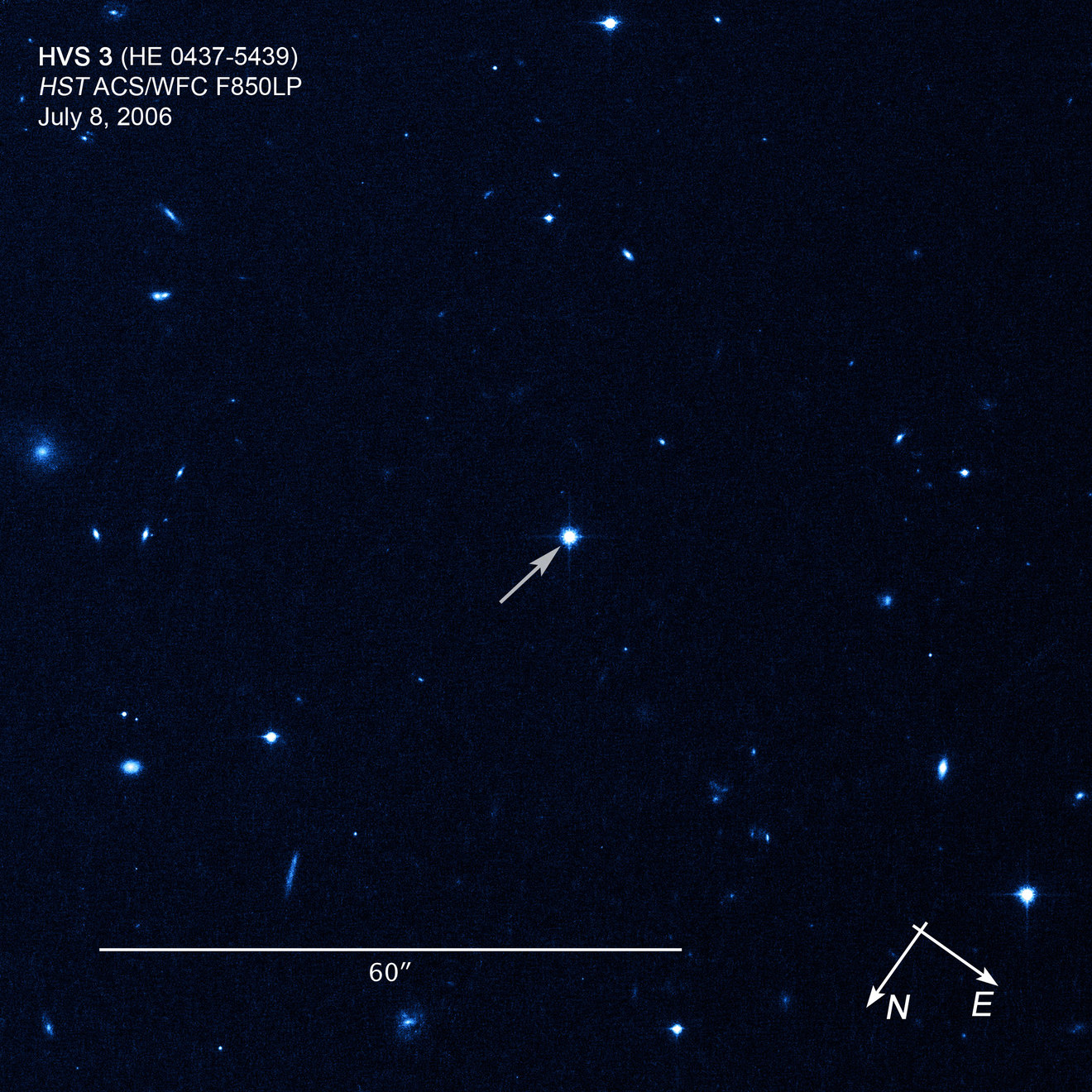
Related Images & Videos

Going, Going, Gone: Star Leaves the Milky Way
In this illustration, the hot, blue star HE 0437-5439 has been tossed out of the center of our Milky Way galaxy with enough speed to escape the galaxy's gravitational clutches. The stellar outcast is rocketing through the Milky Way's distant outskirts at 1.6 million miles an...

Triple-star System Passes near Milky Way's Central Black Hole
This illustration shows one possible mechanism for how the star HE 0437-5439 acquired enough energy to be ejected from our Milky Way galaxy. In this scenario, a triple-star system, consisting of a close binary system and another outer member bound to the group, is orbiting near...
Share
Details
Claire Andreoli
NASA’s Goddard Space Flight Center
Greenbelt, Maryland
claire.andreoli@nasa.gov

